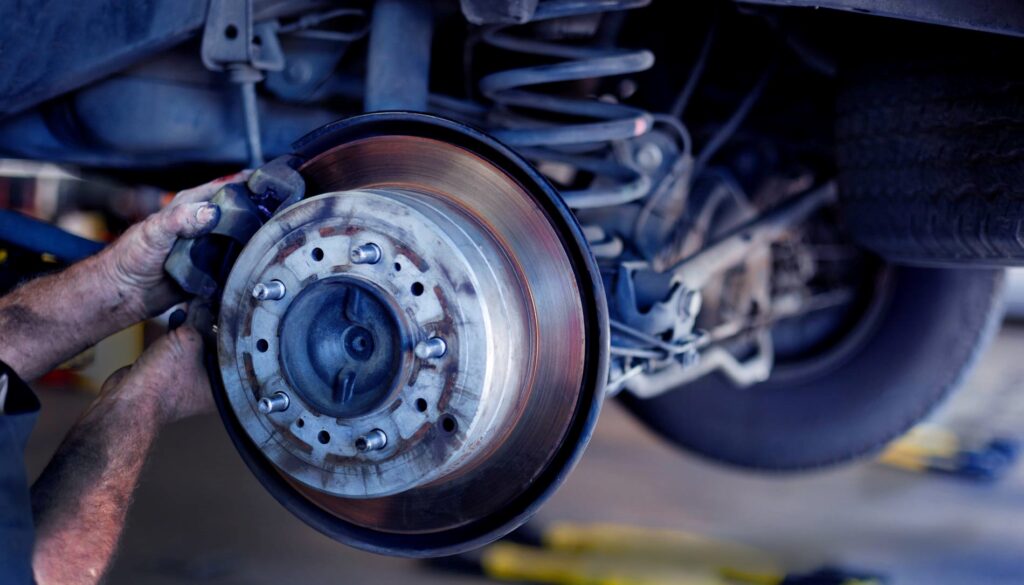
Brakes are a crucial component of your vehicle, providing the necessary stopping power to keep you and your passengers safe on the road. Unfortunately, brakes can experience various problems over time, which can compromise their performance and put you at risk.
If you suspect a problem with your brakes, pop into one of our garages and have a professional inspect your brake system as soon as possible. (Download the free brake inspection offer here)
Here are some common brake problems and how to identify them:
Grinding or Squealing Noises
If you hear a grinding or squealing noise when you apply the brakes, it’s a clear sign that something is wrong. The most common cause of this type of noise is worn-out brake pads. When the pads are worn down to the metal, they start to grind against the rotor, causing a loud, metallic noise. Squealing brakes can also indicate a problem with the brake linings, calliper, or rotor. To diagnose the issue, have a professional inspect your brakes.
Spongy or Soft Brake Pedal
If you feel a spongy or soft brake pedal, it means that there is air in the brake line, which reduces the braking force. A spongy pedal can also indicate a problem with the brake booster or master cylinder. To diagnose the issue, have a professional perform a brake system check, including a brake fluid test.
Vibrating Brake Pedal
If you feel a vibration or pulsation in the brake pedal, it’s a sign of warped rotors. Warped rotors occur when the rotors get overheated, causing them to deform. To diagnose the issue, have a professional inspect your brake system, including the rotors, callipers, and brake pads.
Brake Warning Light
If your brake warning light comes on, it’s an indicator that there is a problem with your brake system. The light can come on for various reasons, including low brake fluid levels, worn brake pads, or a malfunctioning brake system component. To diagnose the issue, have a professional inspect your brakes, including a brake fluid test.
Pulling to One Side
If your vehicle pulls to one side when you apply the brakes, it’s a sign of an uneven brake system. The most common cause of this issue is worn or contaminated brake pads or worn rotors. To diagnose the issue, have a professional inspect your brakes and perform a brake system check.
Slow Brake Response
If your brakes take longer to stop the vehicle than usual, it’s a sign of a problem with your brake system. The most common causes of slow brake response are worn brake pads, worn rotors, or low brake fluid levels. To diagnose the issue, have a professional inspect your brakes and perform a brake fluid test.
Fading Brakes
If your brakes start to fade or lose stopping power, it’s a sign of overheated brakes. Overheated brakes can occur when the brakes are used excessively, such as in high-speed driving or when driving down a steep mountain. To diagnose the issue, have a professional inspect your brakes and perform a brake system check.
In conclusion, it’s essential to pay attention to any changes in your brake system, such as strange noises, soft or spongy brake pedals, and warning lights. Regular brake maintenance can help prevent problems and extend the life of your brakes. Driving with faulty brakes can put you and your passengers at risk, so make sure to have them checked and repaired promptly.
If you suspect a problem with your brakes, pop into one of our garages and have a trained engineer inspect your brake system as soon as possible.
You can download the free brake inspection offer here
